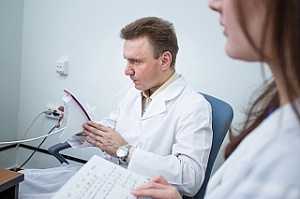TSU has introduced a new method of spectral analysis that allows detection of bronchopulmonary diseases including lung cancer by analyzing exhaled breath with high accuracy. Based on this method, a compact and affordable device for screening studies will be released soon
- Clinical research has proved the that new technique is able to distinguish between lung cancer carriers, chronic obstructive pulmonary patients, and healthy people with a probability of 90%, and to determine healthy people with a probability of 70%. The air expired by a human represents a very complex gaseous mixture that can display the changes in the body occurring during a given disease. We have developed a new method of analyzing this mixture and revealed the most specific markers for particular diseases, - said project leader, assistant pro-rector for research of TSU, Yuri Kistenev.
To analyze exhaled breath, the scientists use a laser gas analyzer. Different groups of disease markers appear in spectra at various specific absorption bands. Consequently, by means of laser spectroscopy, different markers in the samples studied could be successfully detected.
Researchers from TSU suggest analyzing the whole spectrum as it acts as a "fingerprint" and contains the information about all components and generally about the medical condition of a patient. Thus, the new technique is based not only on tracking discrete spectral signatures but on the straight calculation of a characteristic set of coefficients along the dataset. As a result, the scientists have found that the data taken from healthy subjects and patients are different, and they build various reference groups in spectra.
The study was conducted in 2015, with every group comprising 10 representative cases. This year, the data gathering is to be continued. The preliminary results were presented in February 2016 at the Photonics West conference in San Francisco.
This work is a part of a large project of TSU in collaboration with Siberian State Medical University and with LLC "Special Technologies" (Novosibirsk) as an industrial partner.

